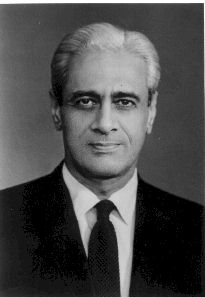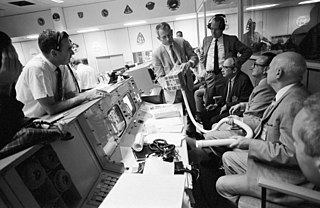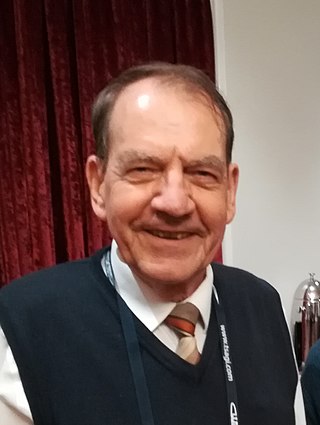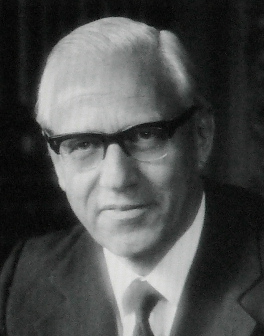
Aerodynamics, from Ancient Greek: ἀήρ aero (air) + Ancient Greek: δυναμική (dynamics), is the study of the motion of air, particularly when affected by a solid object, such as an airplane wing. It involves topics covered in the field of fluid dynamics and its subfield of gas dynamics. The term aerodynamics is often used synonymously with gas dynamics, the difference being that "gas dynamics" applies to the study of the motion of all gases, and is not limited to air. The formal study of aerodynamics began in the modern sense in the eighteenth century, although observations of fundamental concepts such as aerodynamic drag were recorded much earlier. Most of the early efforts in aerodynamics were directed toward achieving heavier-than-air flight, which was first demonstrated by Otto Lilienthal in 1891. Since then, the use of aerodynamics through mathematical analysis, empirical approximations, wind tunnel experimentation, and computer simulations has formed a rational basis for the development of heavier-than-air flight and a number of other technologies. Recent work in aerodynamics has focused on issues related to compressible flow, turbulence, and boundary layers and has become increasingly computational in nature.

Wind tunnels are large tubes with air blowing through them which are used to replicate the interaction between air and an object flying through the air or moving along the ground. Researchers use wind tunnels to learn more about how an aircraft will fly. NASA uses wind tunnels to test scale models of aircraft and spacecraft. Some wind tunnels are large enough to contain full-size versions of vehicles. The wind tunnel moves air around an object, making it seem as if the object is flying.

The National Advisory Committee for Aeronautics (NACA) was a United States federal agency founded on March 3, 1915, to undertake, promote, and institutionalize aeronautical research. On October 1, 1958, the agency was dissolved and its assets and personnel were transferred to the newly created National Aeronautics and Space Administration (NASA). NACA is an initialism, i.e., pronounced as individual letters, rather than as a whole word.

Theodore von Kármán, was a Hungarian-American mathematician, aerospace engineer, and physicist who worked in aeronautics and astronautics. He was responsible for crucial advances in aerodynamics characterizing supersonic and hypersonic airflow. The threshold of outer space is named the "Kármán line" in recognition of his work. Kármán is regarded as an outstanding aerodynamic theoretician of the 20th century.

Robert T. Jones,, was an aerodynamicist and aeronautical engineer for NACA and later NASA. He was known at NASA as "one of the premier aeronautical engineers of the twentieth century". The papers of Robert T. Jones are in the Stanford University Libraries archives.

Satish Dhawan was an Indian mathematician and aerospace engineer, widely regarded as the father of experimental fluid dynamics research in India. Born in Srinagar, Dhawan was educated in India and further on in United States. Dhawan was one of the most eminent researchers in the field of turbulence and boundary layers, leading the successful and indigenous development of the Indian space programme. He succeeded M. G. K. Menon, as the third chairman of the Indian Space Research Organisation (ISRO) in 1972.
The Stanton number, St, is a dimensionless number that measures the ratio of heat transferred into a fluid to the thermal capacity of fluid. The Stanton number is named after Thomas Stanton (engineer) (1865–1931). It is used to characterize heat transfer in forced convection flows.
Applied mechanics is the branch of science concerned with the motion of any substance that can be experienced or perceived by humans without the help of instruments. In short, when mechanics concepts surpass being theoretical and are applied and executed, general mechanics becomes applied mechanics. It is this stark difference that makes applied mechanics an essential understanding for practical everyday life. It has numerous applications in a wide variety of fields and disciplines, including but not limited to structural engineering, astronomy, oceanography, meteorology, hydraulics, mechanical engineering, aerospace engineering, nanotechnology, structural design, earthquake engineering, fluid dynamics, planetary sciences, and other life sciences. Connecting research between numerous disciplines, applied mechanics plays an important role in both science and engineering.
Ernst Rudolph Georg Eckert was an Austrian American engineer and scientist who advanced the film cooling technique for aeronautical engines. He earned his Diplom Ingenieur and doctorate in 1927 and 1931, respectively, and habilitated in 1938. Eckert worked as a jet engine scientist at the Aeronautical Research Institute in Braunschweig, Germany, then via Operation Paperclip, began jet propulsion research in 1945 at Wright-Patterson Air Force Base. In 1951, Eckert joined the University of Minnesota in the department of mechanical engineering. Eckert published over 550 scientific papers and books. The Eckert number in fluid dynamics was named after him.

Jakob Ackeret, FRAeS was a Swiss aeronautical engineer. He is widely viewed as one of the foremost aeronautics experts of the 20th century.

Theodore Theodorsen was a Norwegian-American theoretical aerodynamicist noted for his work at NACA and for his contributions to the study of turbulence.

Aerospace engineering is the primary field of engineering concerned with the development of aircraft and spacecraft. It has two major and overlapping branches: aeronautical engineering and astronautical engineering. Avionics engineering is similar, but deals with the electronics side of aerospace engineering.

Hans G. Hornung is an emeritus C. L. "Kelly" Johnson Professor of Aeronautics and Director of the Guggenheim Aeronautical Laboratory of the California Institute of Technology (GALCIT). He received his bachelor (1960) and master (1962) degrees from the University of Melbourne and his Ph.D. degree (1965) in Aeronautics from Imperial College, London. He worked in the Aeronautical Research Laboratories, Melbourne, and in the Physics Department of the Australian National University (1967–1980), with a sabbatical year as a Humboldt Fellow in Darmstadt, Germany, 1974. In 1980 he accepted an offer to head the Institute for Experimental Fluid Mechanics of the DLR in Göttingen, Germany. He left Germany in 1987 to serve as the director of GALCIT. During his time at GALCIT he oversaw the construction of three large facilities: the T5 hypervelocity shock tunnel, the John Lucas Adaptive-Wall Wind Tunnel, and a supersonic Ludwieg tube.

Sir Frederick William Page was an English aircraft designer and manager. He had large involvements with two British aircraft projects - the English Electric Lightning and the BAC TSR.2. Arguably, the sum total of his contribution to the British aerospace community over a period of 45 years until his retirement in 1983 was greater than that of any other individual.
Dr. Farrukh S. Alvi is a Professor of Mechanical Engineering at Florida State University who works in the development and implementation of actuators, especially micro-fluidic actuators for flow and noise control applications in the aerospace industry. According to the American Society of Mechanical Engineers, "Alvi’s Boeing-FSU team developed the actuators implemented in a fullscale supersonic store release sled test for the Holloman Air Force Base DARPA program—the first sled test of its kind and the first supersonic store release." His research provides insights on how to address shock boundary layer interactions, the aeroacoustics of high speed jets, including supersonic impinging jets, and the associated problems of compressible mixing and jet noise. Dr. Alvi also directs the Florida Center for Advanced Aeropropulsion, a statewide partnership between universities and industry in Tallahassee, Florida that has been selected by the FAA as a national Center of Excellence, where he is building a new generation wind tunnel funded by the National Science Foundation and also heads the Advanced Aero-Propulsion Laboratory. Dr. Alvi is an elected fellow of the American Society of Mechanical Engineers, serves on the editorial board of the American Institute of Aeronautics and Astronautics Journal, and holds a Ph.D. in mechanical engineering from Pennsylvania State University.

Sir John Harold Horlock FRS FREng was a British professor of mechanical engineering, and was vice-chancellor of both the Open University and the University of Salford, as well as vice-president of the Royal Society. In 1977, he was elected a fellow of the Royal Academy of Engineering
Mujeeb R. Malik is a Pakistani born American aerospace engineer serving as Senior Aerodynamicist at NASA Langley Research Center. He is known for his research in boundary layer stability, laminar-turbulent transition, computational methods and aerodynamic simulations. He was the architect of CFD Vision 2030, a NASA-sponsored study to advance the state-of-the-art of computational fluid dynamics (CFD) by exploiting high performance computing and modern validation experiments.

The MARHy Hypersonic low density Wind Tunnel, located at the ICARE Laboratory in Orléans, France, is a research facility used extensively for fundamental and applied research of fluid dynamic phenomena in rarefied compressible flows. Its name is an acronym for Mach Adaptable Rarefied Hypersonic and the wind tunnel is recorded under this name under the European portal MERIL.
Dorothy Blanche Louisa Marshall was a British chemist who worked at Girton, Avery Hill and the National Physical Laboratory. In 1904, she signed a petition for women to be admitted as a Fellow of the Chemical Society.
Walter Guido Vincenti was an American engineer who worked in the field of aeronautics, designing planes that could fly at hypersonic speed. He was elected as a member of several scientific societies, including the American Institute of Aeronautics and Astronautics and National Academy of Engineering. He won several prestigious awards, such as the Leonardo da Vinci Medal and the Daniel Guggenheim Medal.












